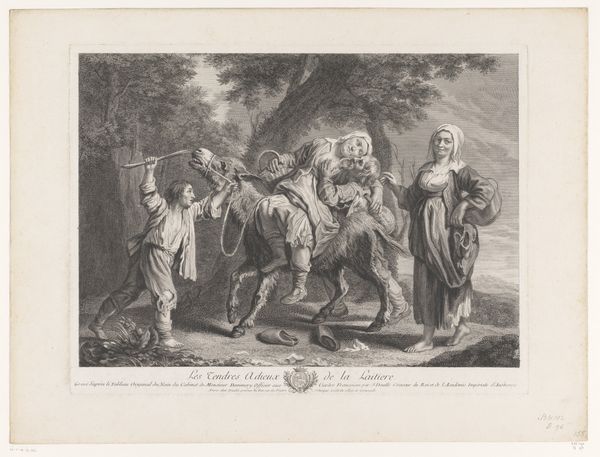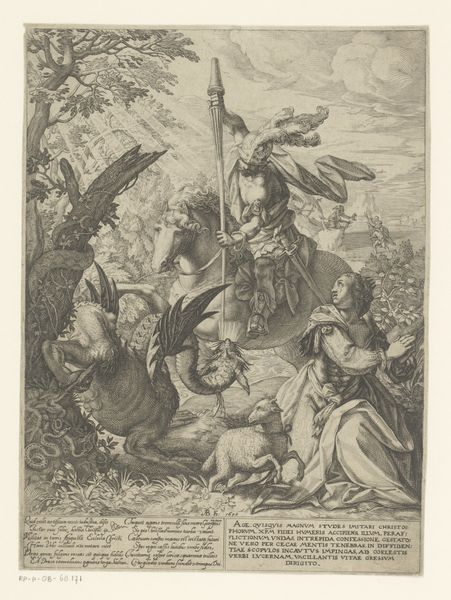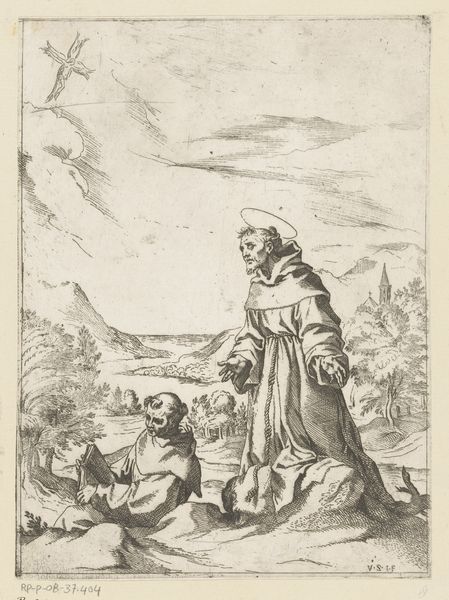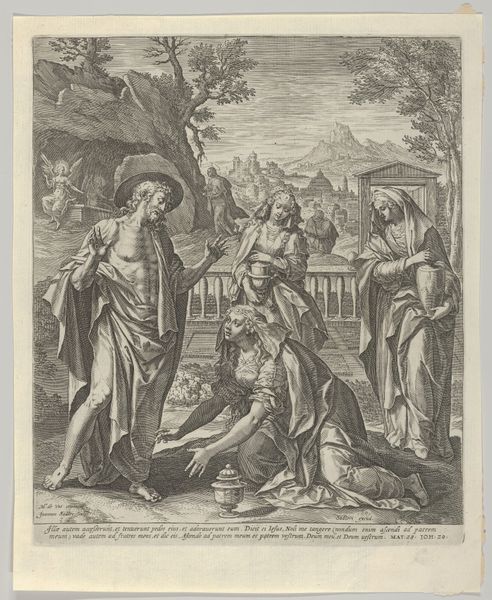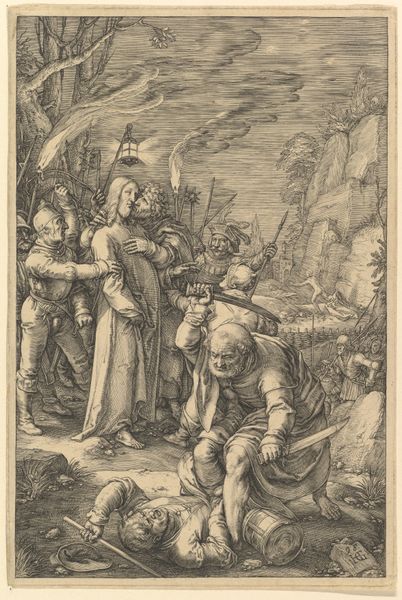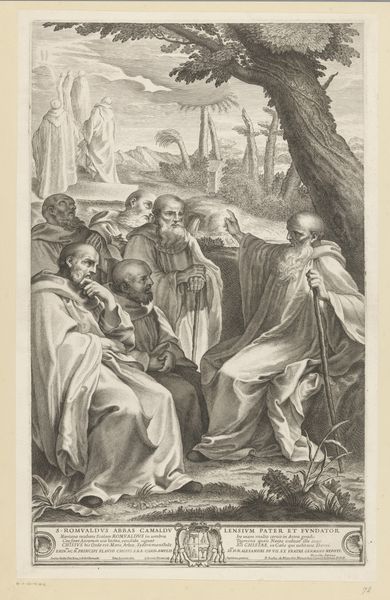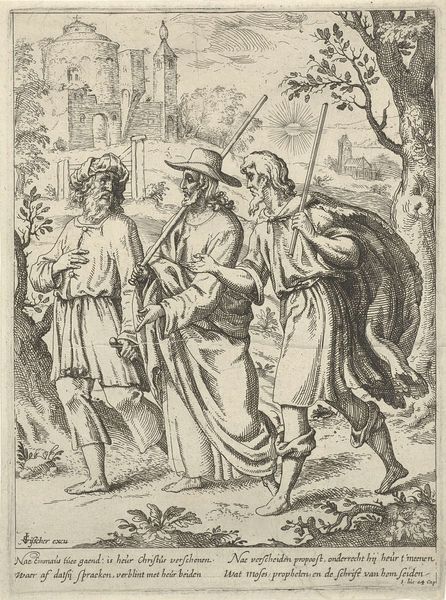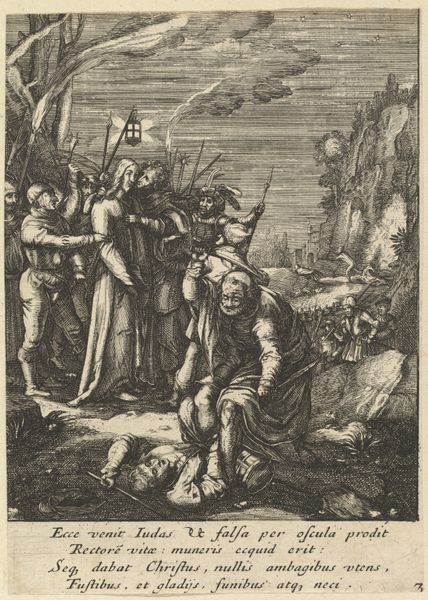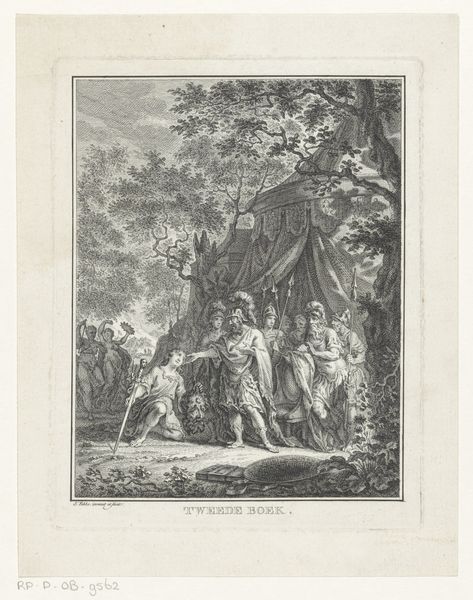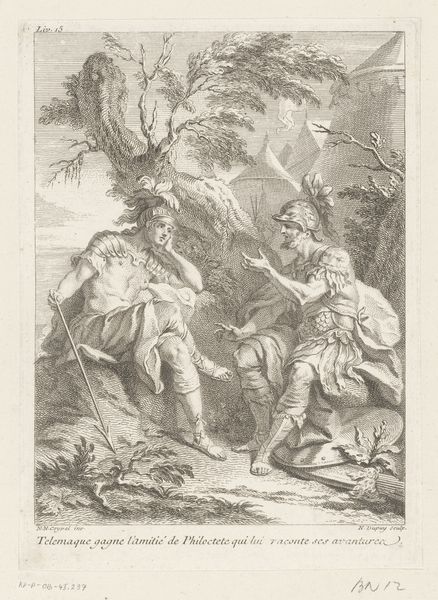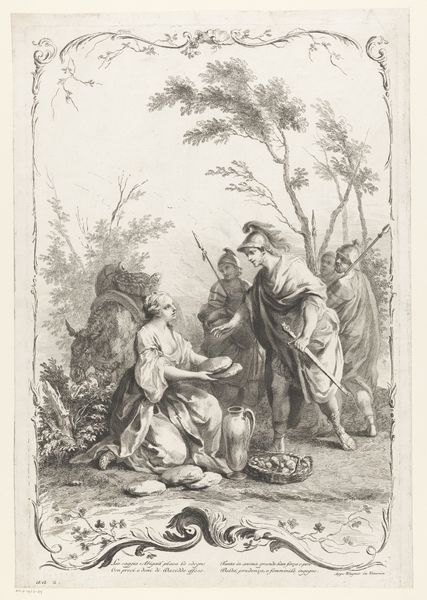
print, etching
#
narrative-art
#
baroque
# print
#
etching
#
old engraving style
#
landscape
#
figuration
#
limited contrast and shading
#
pen work
Dimensions: height 156 mm, width 112 mm
Copyright: Rijks Museum: Open Domain
Abraham Bosse made this print, "Polexandre kneels before a woman," in Paris, sometime in the mid-17th century. As an engraving, it’s the result of an exacting, repetitive process. Bosse would have used a tool called a burin to cut lines into a copper plate, effectively turning the metal into a matrix for printing. Notice the precision of the lines, creating contrasts of dark and light. This allowed Bosse to depict an entire scene with figures in a landscape. He was among the first artists to popularize this technique, which made images widely available at relatively low cost. Bosse was a master of perspective and also published instructional manuals on the subject. What is also relevant is that he came from a family of artisans. Through printmaking, he took part in a world that was rapidly changing, becoming more accessible and commercial. This engraving speaks to the democratization of image-making, a key development in early modern Europe. By understanding its materiality and context, we can appreciate how it blurred the boundaries between art, craft, and commerce.
Comments
No comments
Be the first to comment and join the conversation on the ultimate creative platform.


